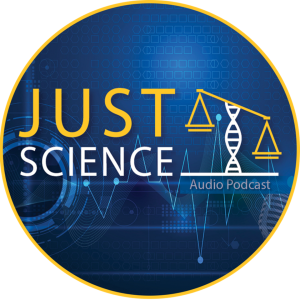Identifying unknown human remains requires the strategic use of investigative techniques and scientific methods. This includes utilizing various forensic methods to gather the decedent’s biometrics, collecting familial reference samples for comparison, and inputting available information into comprehensive databases to facilitate connections to cases nationwide and internationally. These efforts can help bring closure to families, identify victims of mass disasters, and find missing persons. Listen along as our guests detail techniques for human identification including forensic genetic genealogy, postmortem fingerprinting, forensic anthropology, and forensic art, as well as the application of comprehensive databases to casework.
Just Science was a podcast of the NIJ Forensic Technology Center of Excellence.
Just Using Forensic Art and Anthropology for Identification
In episode four of our Applications of Forensic Science for Human Identification Season, Just Science sat down with Katharine Pope, a Research Public Health Analyst at RTI International, Dr. Bruce Anderson, a forensic anthropologist with the Pima County Office of the Medical Examiner, and Joe Mullins, an instructor at the New York Academy of Art, to discuss human identification using forensic anthropology and facial approximations.
Just a Curious Case of Print Persistence
In episode two of our Applications of Forensic Science for Human Identification Season, Just Science sat down with Bryan Johnson, the Major Incident Program Manager in the Federal Bureau of Investigation's Latent Print Unit, to discuss how postmortem prints can be used to help identify unknown decedents. One of the cheapest, easiest and fastest methods of identifying individuals is through friction ridge prints. However, challenges can arise in cases where trauma or decomposition affect quality of a decedent's hands.
Just Leveraging Databases for Human Identification
In episode three of our Applications of Forensic Science for Human Identification season, Just Science sat down with Lori Bruski and Amy Jenkinson, two research public health analysts at RTI International to discuss inter-agency efforts to compile crime, missing persons and decedent information and comprehensive databases. In the digital age, criminal justice information can be uploaded into databases and organized in a searchable, centralized location, making it more accessible than ever.
Just Identifying Individuals with Forensic Genetic Genealogy
In episode one of our Applications of Forensic Science for Human Identification season, Just Science sat down with Dr. Heather McKiernan, a Research Forensic Scientist at RTI International, and Ashley Rodriguez, a Research Public Health Analyst at RTI International, to discuss the use of forensic genetic genealogy in identifying human remains. Oftentimes unknown human remains are recovered fully or partially skeletonized, with no close biological relatives in CODIS to facilitate identification.


